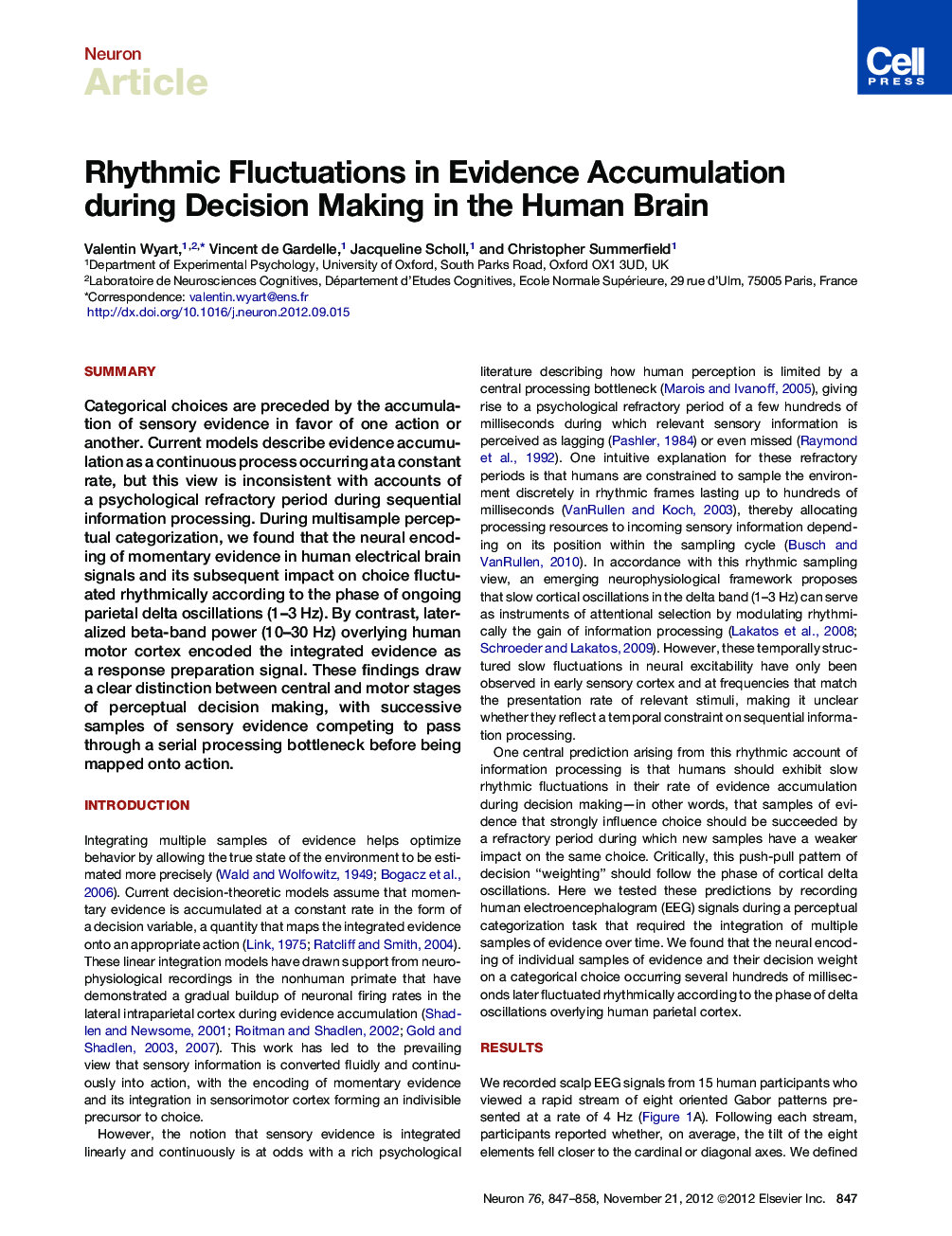| Article ID | Journal | Published Year | Pages | File Type |
|---|---|---|---|---|
| 4321267 | Neuron | 2012 | 12 Pages |
SummaryCategorical choices are preceded by the accumulation of sensory evidence in favor of one action or another. Current models describe evidence accumulation as a continuous process occurring at a constant rate, but this view is inconsistent with accounts of a psychological refractory period during sequential information processing. During multisample perceptual categorization, we found that the neural encoding of momentary evidence in human electrical brain signals and its subsequent impact on choice fluctuated rhythmically according to the phase of ongoing parietal delta oscillations (1–3 Hz). By contrast, lateralized beta-band power (10–30 Hz) overlying human motor cortex encoded the integrated evidence as a response preparation signal. These findings draw a clear distinction between central and motor stages of perceptual decision making, with successive samples of sensory evidence competing to pass through a serial processing bottleneck before being mapped onto action.
► Sensory evidence is accumulated discontinuously during decision making ► Unique computations occur at central and motor stages of evidence processing ► The phase of slow cortical oscillations predicts the gain of evidence accumulation ► Fast oscillatory motor activity reflects the accumulated decision information
